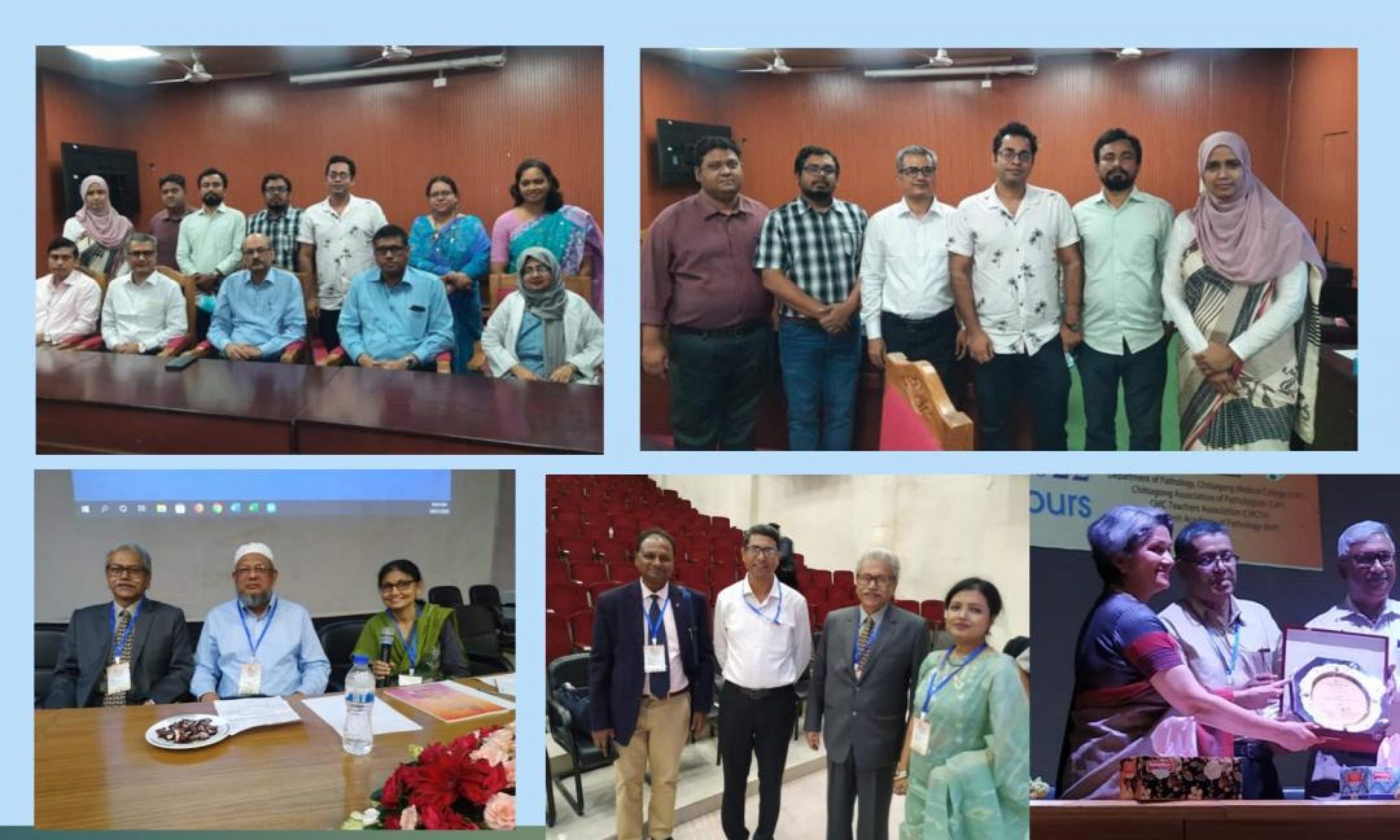Mesenteric Cystic Lymphangioma – Case Report
*Nazrin MS,1 Rahman DS2
- *Dr. Mosammet Suchana Nazrin, Professor & Head, Department of Pathology, North East Medical College, Sylhet, Bangladesh. nazrinsuchana@gmail.com
- Dil Shakira Rahman, Lecturer, Department of Pathology, North East Medical College, Sylhet, Bangladesh.
*For correspondence
Abstract
Cystic lymphangioma is a rare tumor of lymphatic origin. Incidence of intra-abdominal lymphangioma accounts <5%. A 4 years old boy, admitted in the North East Medical College and Hospital, Sylhet, Bangladesh with the complaints of abdominal distension, severe pain in whole abdomen, nausea, anorexia and vomiting. CT findings were suggestive of mesenteric cyst. At laparotomy, a cystic tumor was found in the mesentery, that was attached to bowel loops. Histopathological examination confirmed the diagnosis of cystic lymphangioma.
[Journal of Histopathology and Cytopathology, 2019 Jul; 3 (2):172-174]
Key words: Lymphangioma, Cyst, Mesentery.
Introduction
Lymphangioma is a rare cystic tumors of lymphatic system, characterized by proliferating lymphatic vessels, occurs most commonly in the head, neck and axilla.1 Other sites include mouth, arm, mediastinum, lung, abdomen and viscera. Intra-abdominal cystic lymphangiomas are rare and comprises less than 5% of all cystic lymphangiomas.2 Differentiating cystic lymphangioma from other cystic growths by imaging techniques alone is often inconclusive and surgery followed by histopathological examination is required for final diagnosis. We are here reporting a rare case of mesenteric cystic lymphangioma in a 4 years old male children.
Case report
A 4 years old boy, admitted in the North East Medical College and Hospital with the complaints of abdominal distension and severe pain in whole abdomen for 15 days, nausea and anorexia for 15 days and vomiting for 1 day. On physical examination, abdomen was hugely distended. Tenderness was present in whole abdomen. There was no organomegaly. Umbilicus was everted and transverse slit was present. The laboratory data presented no anaemia, CRP was 10 mg/dl, serum creatinine 0.5 mg/dl, serum electrolytes showed Na+ 141 mmol/L, K+ 4.4 mmol/L, Cl– 105 mmol/L, HCO3–18 mmol/L. However, computed tomography revealed a large cystic mass of about 16x13x10.5 cm, which extended from right side of upper abdomen to pelvic cavity and displaced adjacent gut loops towards left. No soft tissue component or calcification was seen within the cyst. There was also right sided hydronephrosis, probably due to pressure effect of the cystic mass. Patient was diagnosed clinically as a case of mesenteric cyst. Laparotomy was done under general anaesthaesia. On laparotomy, there was a mesenteric cyst in the abdomen. Aspiration was done. The fluid color was haemorrhagic, probably due to pressure effect and congestion of the blood vessels. The cyst was clinically designated as mesenteric cyst and sent for histopathological examination.
On gross examination, there was a cystic mass measuring 7x 6 x4 cm size. The surface was smooth. On cut section, it was multiseptate and multiloculated with various sized cystic spaces. Microscopic examination showed multiple cystic spaces separated by fibrocollageous stroma. The cysts were lined by single layer of endothelium. The lumens were filled with homogenous eosinophilic material with a few clusters of macrophages. The stroma was infiltrated with lymphocytes, forming lymphoid aggregates. Histopathological examination confirmed the diagnosis of mesenteric cystic lymphangioma. The post-operative period was uncomplicated and the patient was discharged on 6th postoperative day.
Discussion
Lymphangioma, a rare cystic tumors of lymphatic system. It is a benign, slow-growing lesions, characterized by proliferating lymphatic vessels, preferentially located in the head & neck (75%), axilla (20%). Incidence of intra-abdominal lymphangioma (accounts <5%), have been reported in the mesentery, genitourinary tract, spleen, liver & pancreas.3 Abdominal cystic lymphangiomas arises from mesentery (59% – 68%), omentum (20-27%), and retroperitonium (12-14%).4 Abdominal cystic lymphangioma is more frequent in boyes (5:2) with mean age at 2 years.5 Intra-abdominal cystic lymphangiomas is most commonly presented with abdominal mass and distension, loss of appetite, nausea and vomiting.1,2,6 Ultrasound findings are not specific, the computed tomographic scan allows the initial diagnosis.1 The diagnosis of cystic lymphangioma can only be confirmed by histological examination.
Conclusion
Cystic lymphangioma is a rare benign tumor that may be arises in various sites. Confirmatory diagnosis of this lesion includes laparotomy followed by histopathology.
Reference
- Chaker K, Sellami A, Ouanes Y, et al. Retroperitoneal cystic lymphangioma in an adult: A case report. Urol Case Rep. 2018;18:33-34.
- Karkera PJ, Sandlas GR, Ranjan RR et al. Intra-abdominal cystic lymphangioma in children: A case series. Arch IntSurg 2012;2:91-95.
- Bhavsar T, Saeed-Vafa D, Harbison S etal., Retroperitoneal cystic lymphangioma in an adult: A case report and review of literature. World Journal of Gastrointestinal Pathophysiology. 2010; 1(5):171-176.
- Muramori K, Zaizen Y and Nogushi S. Abdominal lymphangioma in children: report of three case. Surgery today. 2009; 39: 414-417.
- Kati O, Gunor S, Kandur Y. Mesenteric cystic lymphangioma: Case report. Journal of Paediatric Surgery 2018;35:26-28
- Rami A, Mahmoudi A, EiMadi A, et al., Giant cystic lymphangioma of mesentery: varied clinical presentation of 3 cases. Pan Afr Med J. 2012; 12:7


